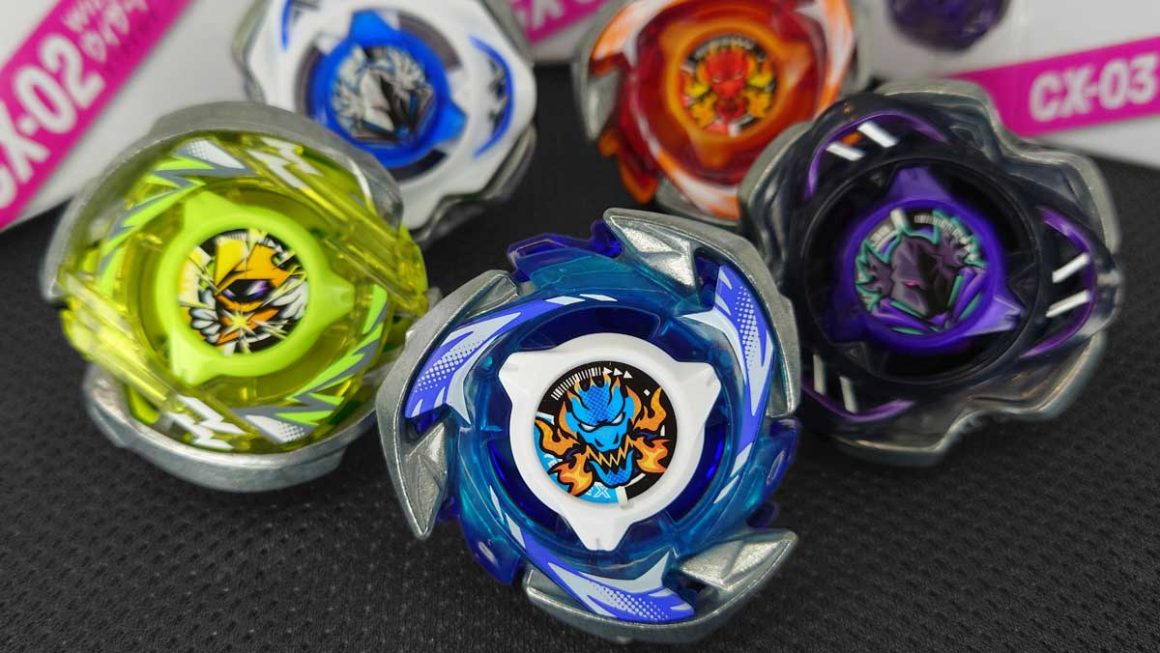Affiliate Disclosure: If you buy something through some of the links on this post, you won’t pay any extra, but we’ll get a small commission. This helps us keep things running. Thanks for your support!
The release of BX-20 Dran Dagger Deck Set and BX-21 Hells Chain Deck Set introduces a new pair of new “Dran” and “Hells” permutations into Beyblade X.
Rather than being a direct upgrade to an existing Beyblade, it seems that these releases are slight reimagining’s that are meant to compete rather than replace the parts from BX-01 Starter Dran Sword 3-60F and BX-02 Starter Hells Scythe 4-60T, at least from a game balance perspective.
In this review, we will focus on Hells Chain 5-60HT from the BX-21 Hells Chain Deck Set. While BX-21 comes with more than Hells Chain 5-60HT, it is the only Beyblade of the set containing never before seen parts.
For information on the other contents of BX-21, namely Knight Lance 3-60LF and Wizard Arrow 4-80N, please head over to our Beyblade X Buyer’s Guide.
Given the incredible versatility and tone set by the Hells Scythe Blade early on, we have devilishly high hopes for Hells Chain Blade to provide similar value. Does it live up to its avatar’s name, or will Chain reap what its design sows, and get whipped by Scythe?
Summary
Of the included three Beyblades, Hells Chain 5-60HT is a decent balance type that is a more endurance-minded variant of the original Hells Scythe 4-60T. Knight Lance 3-60LF is an Attack type that, while not as potent as other Blade options, is mostly serviceable. Finally, Wizard Arrow 4-80N is meant to be a Defense type, and of the bunch it is likely the most competent in achieving its aims.
Each of these stock combos are, on their own, suboptimal and nothing to write home about. The stand-out parts like 5-60 Ratchet & 3-60 Ratchet, Low Flat Bit and even Hells Chain Blade range from decent to top-tier in their respective niches.
Ultimately, the Hells Chain Deck Set is a release that’s may not be a necessary pickup for all Bladers. Due to its primary focus is on its individual parts rather than the combos provided, it will better serve competitive Bladers looking to bolster their collection and build combos rather than new players looking for something super strong out of the box.

Parts Summary
Hells Chain Blade:
The Hells Chain Blade is an interesting alternative to the Hells Scythe Blade. While it lacks the same raw versatility, it is much more effective into Attack types of all shapes, providing a low-recoil alternative to the very reliable Hells Scythe. For one reason or another, the Hells Chain Blade is excellent if not the best Blade on conical tips so far. Read More.
5-60 Ratchet:
The 5-60 Ratchet is, as of writing, the heaviest 60 Ratchet available, making it favourable for Defense and Attack types, while also being a decent balance-tuning option for certain Blades thanks to its unique shape. A must-have Ratchet for competitive Bladers. Read More.
High Taper Bit:
Unlike with High Needle and Needle, the High Taper Bit’s design remains fundamentally identical to the original Taper Bit. Compared to the original it makes combos slightly more susceptible to attacks from below but also allows for a bit more precession towards the end of a match or exposing different points of contact which could potentially make or break a battle. Read More.
Knight Lance 3-60LF:
Knight Lance 3-60LF is meant to be the Deck’s primary Attack type, and while it may see some success, the excellent 3-60LF portion is being held back by the Knight Lance Blade. In practical terms the inclusion of this combo is to provide value through the foundation of a top tier Attack type, via the not-so-often re-released 3-60 Ratchet and Low Flat Bit.
Wizard Arrow 4-80N:
Wizard Arrow 4-80N is this Deck’s Defense Type. While the other two combos are in some ways only vehicles to optimizing other combos in one’s collection, Wizard Arrow 4-80N can, for the most part, stay stock. With the Wizard Arrow Blade and the Needle Bit it is a decent low-recoil and docile Defense option that can make even exceptional Attack types struggle.
Where to Buy BX-21 Hells Chain Deck Set

Heads up: If you buy something through some of the links on this post, you won’t pay any extra, but I’ll get a small commission. This helps me keep things running. Thanks for your support!

25 years. 4 generations. And we still don’t know: is Beyblade a sport? A toy?
I wrote a 100 page article to answer this question.

Sponsored: Order the newest Beyblades at malloftoys.com!
Heads up: If you buy something through Mall of Toys, you won’t pay any extra, but I’ll get a small commission. This helps me keep things running. Thanks for your support!
Product Details
- Brand: TAKARA-TOMY
- Product Code: BX-21
- Product Contents:
- Hells Chain 5-60HT
- Knight Lance 3-60LF
- Wizard Arrow 4-80N
- System: Gear Sports
- Series: Beyblade X
Part Weights
- Hells Chain Blade: 33.26g
- 5-60 Ratchet: 6.52g
- High Taper Bit: 2.30g
- Knight Lance Blade: 32.96g
- 3-60 Ratchet: 6.21g
- Low Flat Bit: 2.12g
- Wizard Arrow Blade: 31.79g
- 4-80 Ratchet: 6.83g
- Needle Bit: 2.00g
Testing Method Notes:
- All tests in this article were done in the BX-10 Xtreme Stadium using two Bladers.
- Matches saw both combos switch out Ratchets and Bits at the half-way point to account for part performance variation, as well as side switching and Blader switching.
- Launch style was a basic hard launch parallel to the stadium unless specified otherwise.
Hells Chain Blade Review
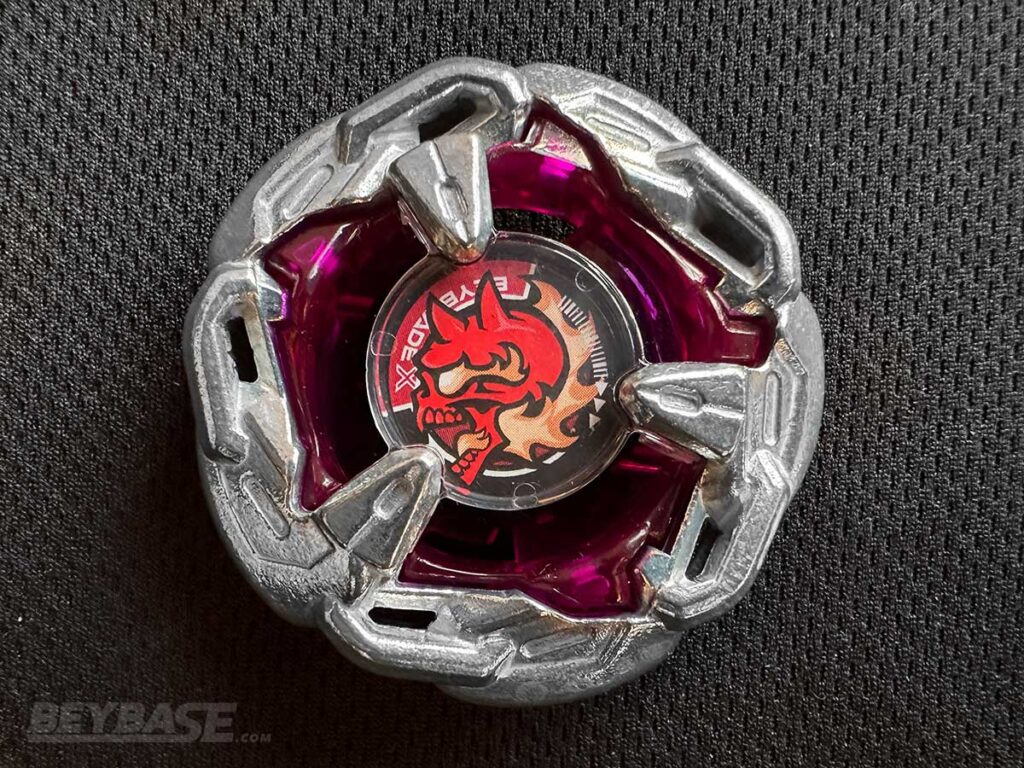
The Hells Chain Blade is an alternative form of the Hells Avatar that debuted with Hells Scythe 4-60T. It features five distinct and rotund contact points, each of which are meant to represent the link of a chain.
Compared to the original Hells Scythe Blade, it is clear that Hells Chain is an effort to be a lower-recoil imagining, as it is all around smoother to the touch with softer edges all around.
The Hells Chain Blade also boasts a slightly higher weight than the average Hells Scythe Blade, though these excellent qualities are kept in check by its asymmetrical, intentionally off-balance, and flat underside, giving way for weakness.
Because of how impactful the Hells Scythe Blade has been on the Beyblade X competitive scene by providing a consistent jack-of-all-trades part for combo building, Hells Chain Blade has been highly anticipated!
Is the Hells Chain Blade as versatile and potent as the original Hells Scythe Blade? We wanted to find out.
Is the Hells Chain Blade good for Stamina Combos?

Hells Chain Blade Ball Bit Testing
Hells Chain 3-60B vs. Hells Scythe 3-60B
- HC 3-60B wins: 3 wins, 5 points (2 KO, 1 OS)
- HS 3-60B.wins: 11 wins, 12 points (1 BF, 10 OS)
- Hells Chain Blade Win Percentage: 21%
- Hells Chain Point Percentage: 29%
Hells Chain 3-60B vs. Wizard Arrow 3-60B
- HC 3-60B wins: 7 wins, 9 points (1 XF, 6 OS)
- WA 3-60B.wins: 8 wins, 9 points (1 KO, 7 OS)
- Hells Chain Blade Win Percentage: 47%
- Hells Chain Point Percentage: 50%
Here we found that, in general, Hells Chain Blade failed to keep up with the Hells Scythe Blade on the Ball Bit. This seems to be a result of being unable to survive a prolonged recoil-laden battle because of Hells Chain Blade’s built-in poor weight distribution, allowing it to topple over sooner than Hells Scythe Blade.
From our own attempts and Blade copies, this balance/distribution problem could not be adequately suppressed by balance-tuning (reconfiguring the orientation of a given combo’s parts to line up better).
Your results may be improved slightly if you can succeed in producing a well-balanced Hells Chain combo. But nevertheless, it does appear that the Hells Scythe Blade has more innate stamina ability.
Against Wizard Arrow Blade, though, which also has the very same issue against the Hells Scythe Blade, it performed admirably. Both of these Blades seemed to be on par with one another though it should be noted that Hells Chain Blade tended to outspin Wizard Arrow Blade by a wider margin with greater frequency.
From here we moved onto an even more docile Bit mirror match, using the Needle Bit.
Hells Chain Blade Needle Bit Testing
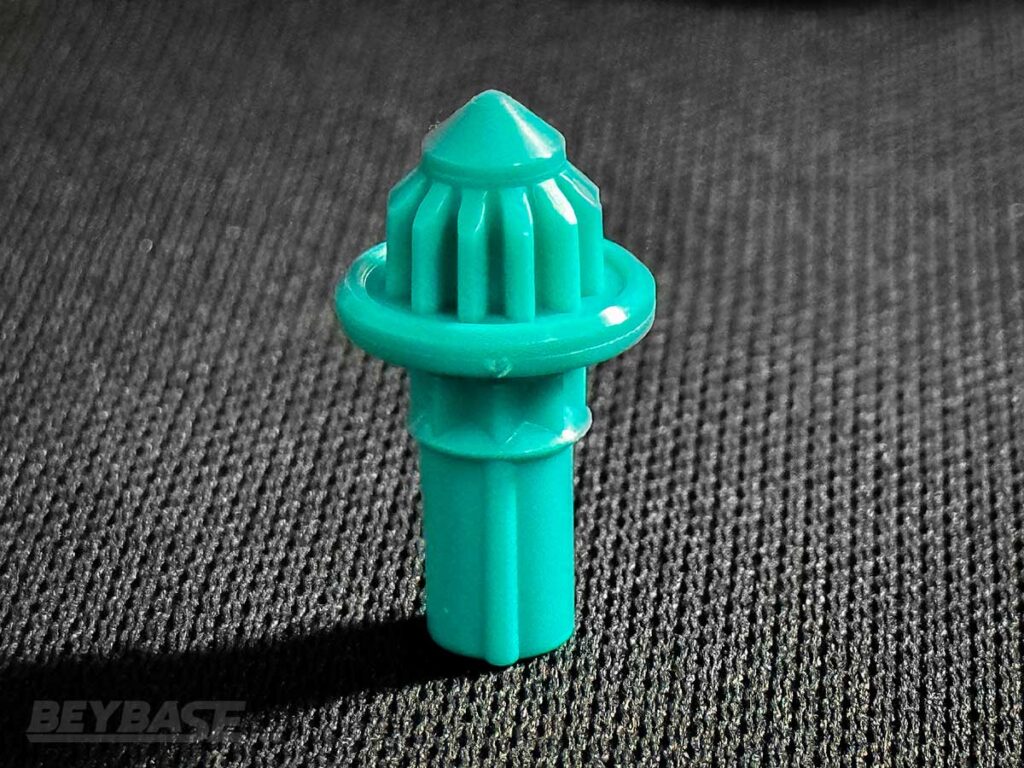
Hells Chain 5-60N vs. Hells Scythe 5-60N
- HC 5-60N wins: 9 wins, 11 points points (1 BF, 1 KO, 7 OS)
- HS 5-60N.wins: 9 wins, 10 points (1 KO, 8 OS)
- Hells Chain Blade Win Percentage: 50%
- Hells Chain Blade Point Percentage: 52%
- Mint Hells Chain Blade, Mint Hells Scythe Blade
- 2 Draws
Interestingly enough, while Hells Chain Blade performed poorly in the Ball Bit mirror, it did exceptionally well in the Needle Bit mirror against Hells Scythe Blade, all things considered. It seemed very back-and-forth between the two, mostly depending on whether or not Hells Chain Blade was able to maintain or regain an upright position until the very end.
When Hells Chain Blade was unable to keep itself upright, in some cases almost immediately precessing after a fairly light hit, it usually lost by a wide margin. In the cases where it was able to stay balanced or regain balance in the match, it was also able to defeat Hells Scythe Blade by a wide margin.
Hells Chain 5-60N vs. Wizard Arrow 5-60N
- HC 5-60N wins: 11 wins, 12 points points (1 KO, 10 OS)
- WA 5-60N.wins: 8 wins, 9 points (1 BF, 7 OS)
- Hells Chain Blade Win Percentage: 58%
- Hells Chain Blade Point Percentage: 57%
- Mint Hells Chain Blade, Mint Wizard Arrow Blade
- 1 Draw
Here, unlike the Ball Mirror before, we found that Hells Chain Blade was able to take a commanding lead.
This is fairly consistent with our understanding of the Blade matchups – we assume that a Blade capable of going even with Hells Scythe Blade under certain conditions should have a distinct advantage against the Wizard Arrow Blade under those same conditions.
High Needle vs. Ball Stamina Testing
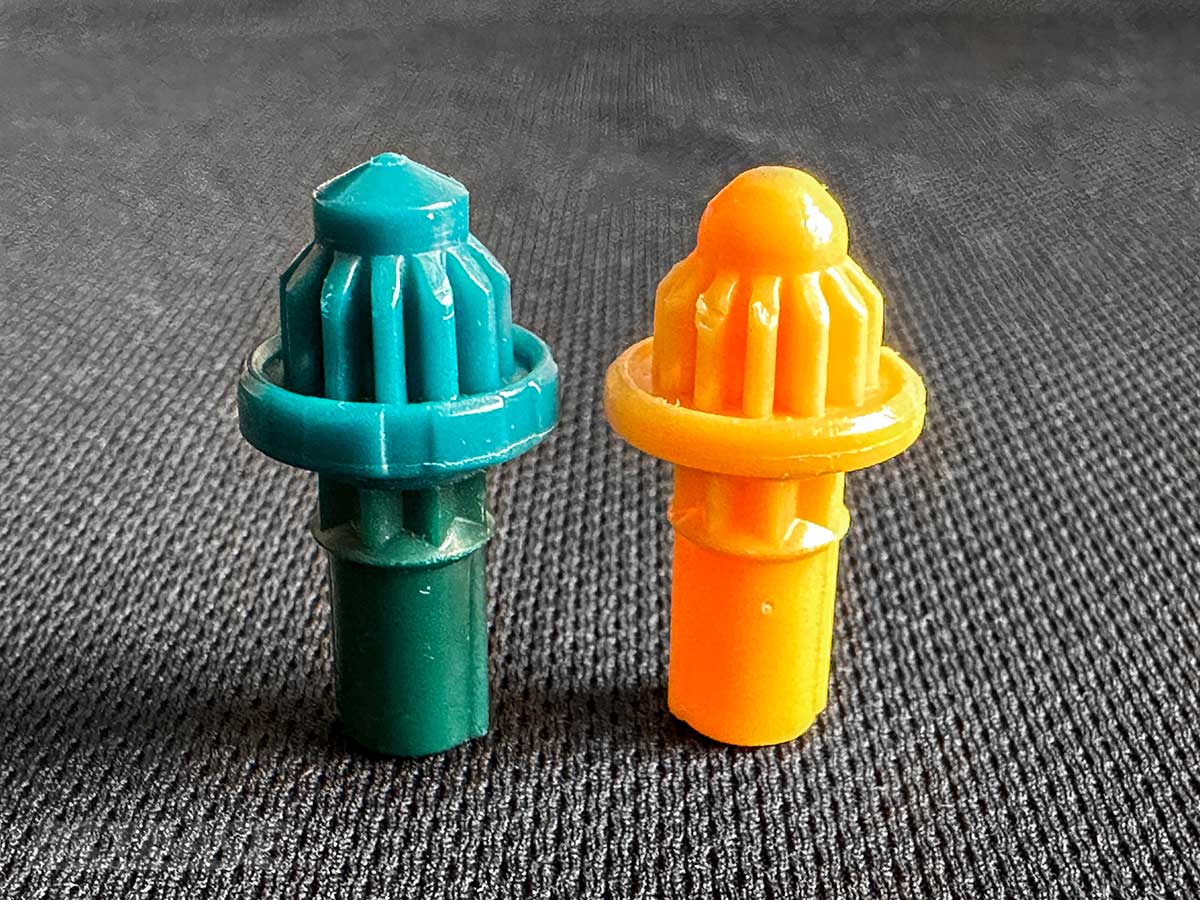
Because it is becoming increasingly apparent that the Hells Chain Blade is more than capable on sharp Bits rather than spherical Bits, we decided to see if putting it on the likes of High Needle Bit, a sharp bit with comparable endurance to Ball Bit, would provide promising results.
Perhaps Ball Bit was not the right fit and when taken out of a Ball Bit Mirror setting Hells Chain Blade could really shine? We gave it a shot.
Hells Chain 5-60HN vs. Hells Scythe 5-60B
- HC 5-60HN wins: 0 wins (0 OS)
- HS 5-60B.wins: 5 wins (5 OS)
- Hells Chain Blade Win Percentage: 0%
- Hells Chain Points Percentage: 0%
- Mint Hells Chain Blade, mint Hells Scythe Blade, mint HN Bit
As it turns out, a shining result was not in the cards for the Hells Chain Blade. Despite our best efforts, the shape of the High Needle Bit only exacerbates the imbalance nature of the Hells Chain Blade, making it topple over far too easily and result in very definitive outspins for Hells Scythe Blade on Ball.
For the sake of it, we also tried the reverse Bit matchup:
Hells Chain 5-60B vs. Hells Scythe 5-60HN
- HC 5-60B wins: 5 wins, 6 points (1 KO, 4 OS)
- HS 5-60HN.wins: 5 wins, 6 points (1 KO, 4 OS)
- Hells Chain Blade Win Percentage: 50%
- Hells Chain Blade Point Percentage: 50%
- Mint Hells Chain Blade, mint Hells Scythe Blade, mint HN Bit
Interestingly this was not a complete wash, with Hells Chain Ball going dead even with Hells Scythe High Needle. It should be noted that the prominence of Hells Scythe Blade on the HN Bit is terribly low since both the Blade and the Bit have a different optimal partner – Ball Bit with the former and Dran Sword Blade with the latter.
Is the Hells Chain Blade good for Defense Combos?
Having seen that Hells Chain Blade fails to usurp the Stamina Blade throne from Hells Scythe, but has an excellent profile for producing little recoil and an excellent performance on the Needle Bit, it made sense for us to see how well Hells Chain Blade does in a pure docile defense combo.
Against attack combos we tested Hells Chain Blade on High Needle Bit, Needle Bit, and finally a benchmark against Hells Scythe Ball just to see if there would be absolutely any reason to separate that Blade/Bit combo.
Hells Chain Blade High Needle Bit Defense Testing
Benchmark: Knight Shield 3-80HN vs. Dran Sword 5-60R
- KS 3-80HN wins: 8 wins, 9 points (1 KO, 7 OS)
- DS 5-60R.wins: 2 wins, 4 points (1 XF, 1 OS)
- Knight Shield Blade Win Percentage: 69%
- Knight Shield Point Percentage: 72%
- 1 Draw
- Worn Dran Sword Blade
Hells Chain 3-80HN vs. Dran Sword 5-60R
- HC 3-80HN wins: 5 wins, 6 points (1 KO, 4 OS)
- DS 5-60R.wins: 4 wins, 7 points (2 BF, 1 KO, 1 OS)
- Hells Chain Blade Win Percentage: 56%
- Hells Chain Blade Point Percentage: 46%
- Worn Dran Sword Blade
Hells Chain 3-80HN (Bank Launch) vs. Dran Sword 5-60R
- HC 3-80HN wins: 5 wins, 5 points (5 OS)
- DS 5-60R.wins: 4 wins, 7 points (2 BF, 1 KO, 1 OS)
- Hells Chain Blade Win Percentage: 56%
- Hells Chain Blade Point Percentage: 42%
- Worn Dran Sword Blade, HC 3-80HN Bank Launch
From these set of testing two things became evident: firstly, banking and flat launching the Hells Chain combo resulted in roughly the same performance.
Secondly, the flat and exposed underside of Hells Chain Blade made it more susceptible to Burst Finishes from the opponent. This design quirk is especially apparent when compared to the Knight Shield Blade which has an adequate overhang to obstruct Ratchet contact.
With that said, these results were far from a poor showing for the Hells Chain Blade, considering how devastating Attack type combos can be against ‘sitting duck’ style combos.
Going nearly even in points and even in win percentage is nothing to scoff at, even though in this configuration it is clear Knight Shield Blade is the preferred Blade choice.
Hells Chain Blade Needle Bit Defense Testing
Given Hells Chain Blade’s lack of under-hang is a problem we thought that lowering its height further, exposing more of its smooth topside, would be wise. We decided to go with a 60 Ratchet height as well as the regular Needle Bit.
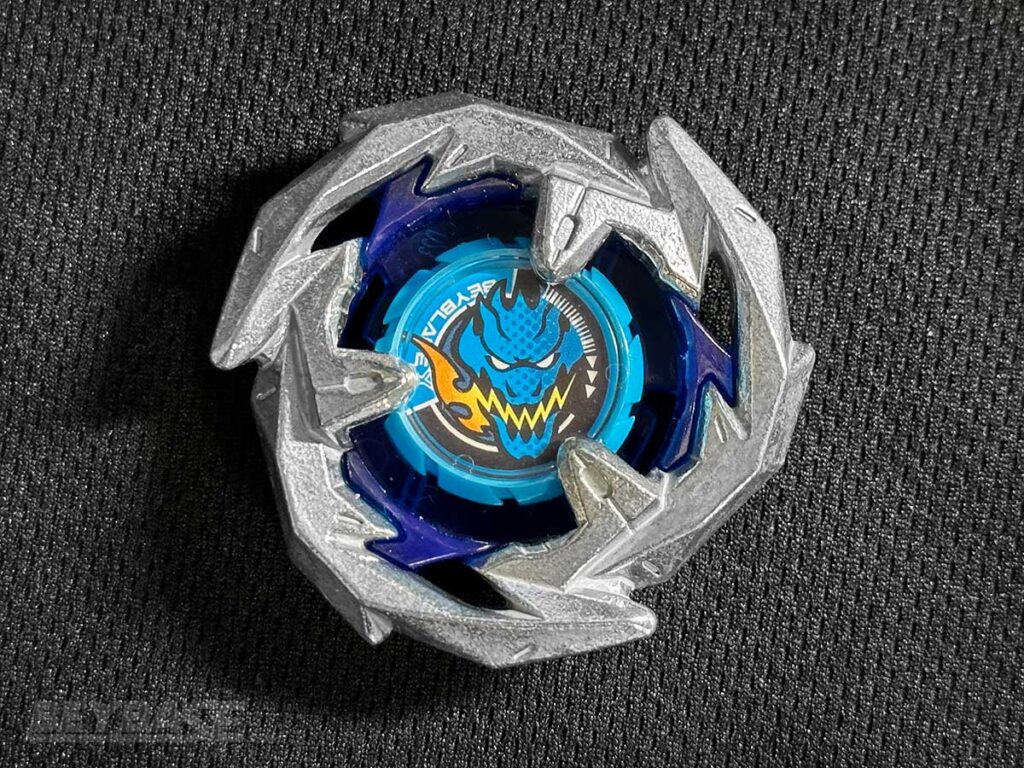
Hells Chain 5-60N vs. Dran Sword 3-60R
- HC 5-60N wins: 7 wins, 13 points(3 XF, 1 BF, 3 OS)
- DS 3-60R.wins: 3 wins, 7 points (1 XF, 2 KO)
- Hells Chain Blade Win Percentage: 70%
- Hells Chain Blade Point Percentage: 65%
- Worn Dran Sword Blade
While these results were excellent, we also can’t help but believe they are also outliers given the sheer amount of Xtreme Finishes Hells Chain was able to produce in these tests in particular and nowhere else.
Even if we ignore those wins, Hells Chain Blade did incredible into our worn Dran Sword Blade. In our informal quick testing of other attack-style Bits we found that in general the Hells Chain Blade was consistently winning around 3 out of 5 matches against Dran Sword, and normally from an outspin victory.
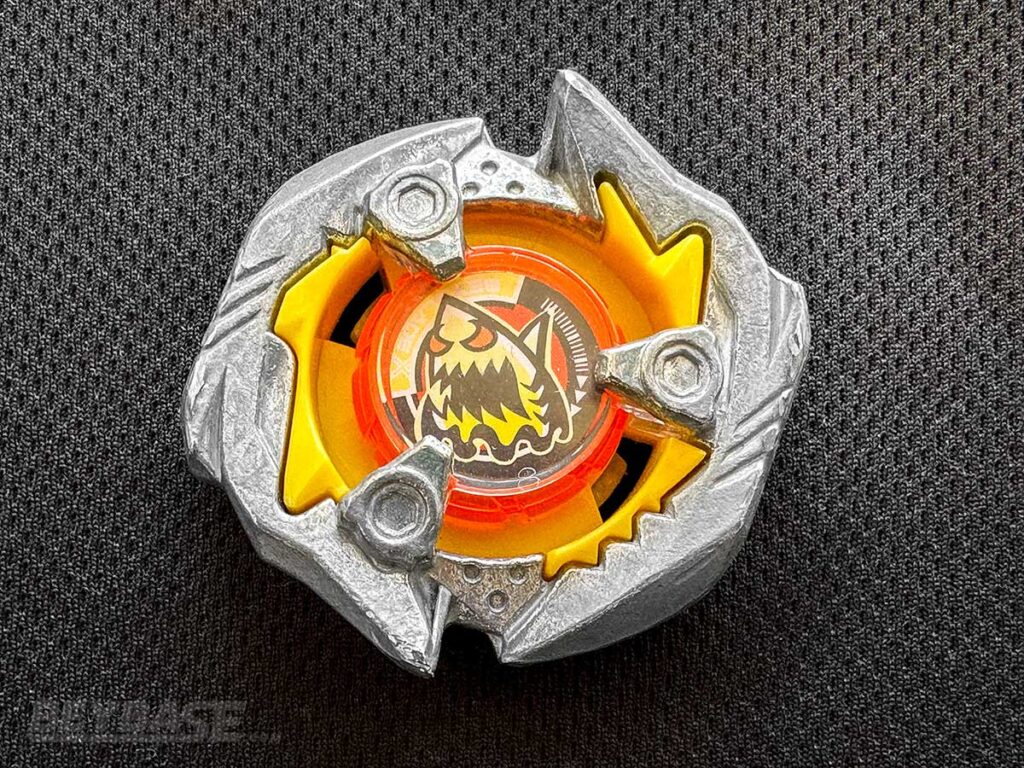
Hells Chain 5-60N vs. Shark Edge 3-60R
- HC 5-60N wins: 4 wins, 8 points (1 XF, 2 KO, 1 OS)
- SE 3-60R wins: 5 wins, 10 points (1 XF, 3 BF, 1 KO)
- Hells Chain Blade Win Percentage: 44%
- Hells Chain Blade Point Percentage: 44%
- 1 Draw
- Mint Shark Edge Blade
Next we decided to test against a mint Shark Edge Blade on the Rush Bit, just in case our worn Dran Sword testing was skewed a bit too much in Hells Chain Blade’s favour. Here things were brought back down to earth again, yet still we see that Hells Chain Blade performed quite well, almost going even in both wins and points.
Hells Chain 5-60N vs. Phoenix Wing 5-60R
- HC 5-60N wins: 5 wins, 7 points (2 KO, 3 OS)
- PW 5-60R wins: 5 wins, 10 points (1 XF, 2 BF, 1 KO, 1 OS)
- Hells Chain Blade Win Percentage: 50%
- Hells Chain Blade Points Percentage: 41%
- Mint Phoenix Wing Blade
Finally we tested against the Phoenix Wing Blade, one of the heaviest attack Blade options available, and still the Hells Chain Blade seemed to hold its ground well. It went dead even in battles won, though came out below Phoenix Wing Blade on points earned.
While Hells Chain Blade was easily thrown around, there were a few key moments where its sleek and sloped topside helped it deflect oncoming attacks or redirect Phoenix Wing Blade into a pocket. Hells Chain Blade was also, for the most part, able to secure outspins in spite of being both lighter and bombarded with attacks throughout battle.
Overall it is clear to us that while Hells Chain Blade may not be the undisputed king of a specific type, it is absolutely the king of sharp Bits like Needle. It provides good raw endurance while also bringing very good defense to the table at the same time.
Certainly a tailoured Hells Scythe Blade Stamina combo or Knight Shield Blade Defense combo out-specializes Hells Chain on Needle, but neither combo gets the exact same mix of both attributes like the Hells Chain Blade does. This makes it a very interesting combo choice to filter out suboptimal or poorly specialized combos.
The Verdict
The Hells Chain Blade is a good but technically skippable Defense or Stamina Blade. It has an excellent mixture of endurance and defense, but likely works better balancing the two than specializing in either.
For this reason, it may be a more intelligent move to pick combos more adept in their respective roles. But in situations where committing to something specialized may be risky, the mixture of ability presented by the Hells Chain Blade can make it an asset.
It’s certainly a step below the Hells Scythe Blade in terms of stamina. But it tends to have a slight upper hand against the similarly functioning Wizard Arrow Blade both in terms of stamina and weight. When compared to the Knight Shield Blade it may technically be slightly worse defensively and lacks some of the offensive upside that Knight Shield is known for, but because of that it can feel slightly less volatile in certain situations too.
While we did not conduct formal tests with it for this article, at tournaments in Japan, Blader Kei has experienced success with Hells Chain not only on Bits with sharp tips (such as the Spike Bit), but the ball-shaped Orb Bit. As mentioned, it works well in situations where specialization might expose you to unnecessary risk.
Ball-shaped tips also offer some ability to evade attacks rather than purely try to absorb or deflect them. We encourage all players to experiment to find out what works best for them. At the end of the day, the Hells Chain Blade is not something you can’t live without, but it has a unique identity which enables a more precise combination of pure stamina and defense performance than most other available options.
Best Hells Chain Blade Combo: Hells Chain 5-60 Orb
How to build HC 5-60O
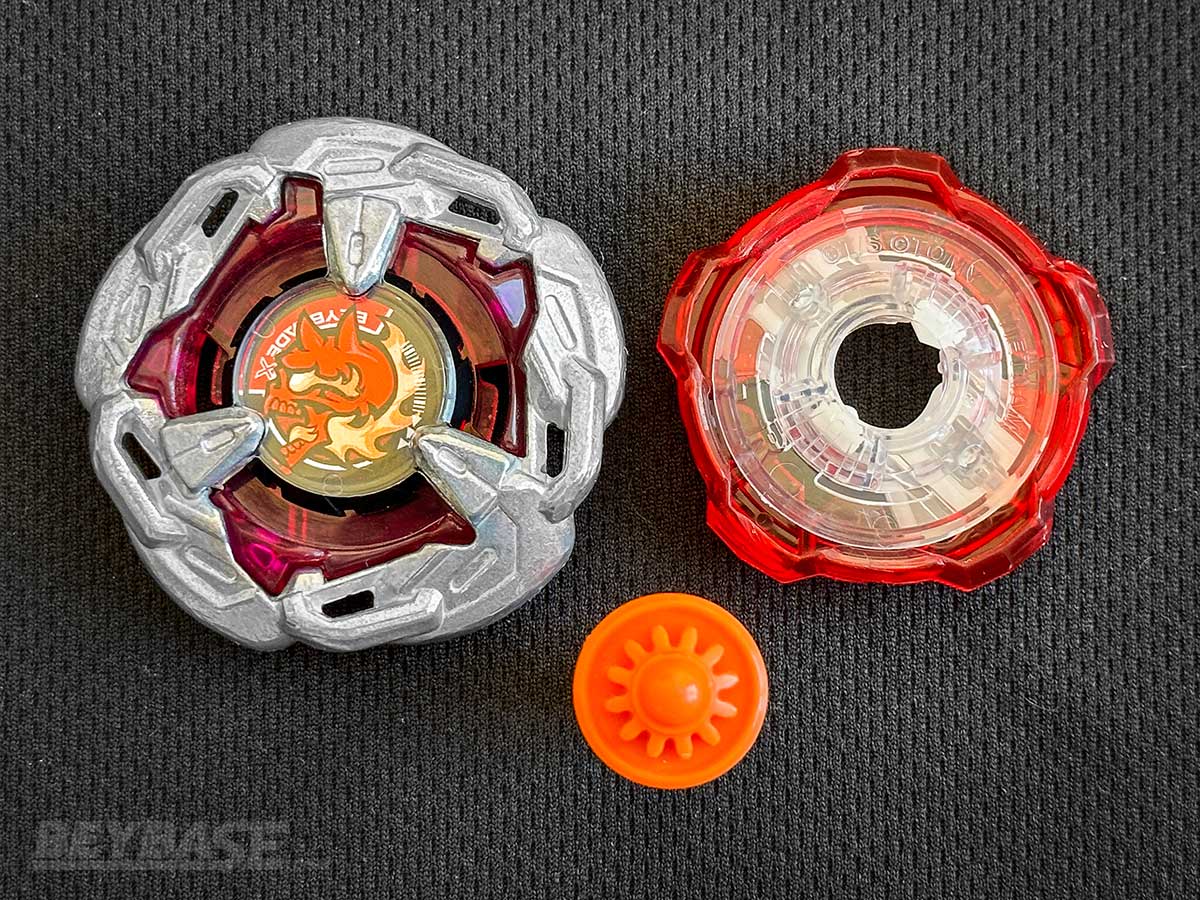
-
Hells Chain Blade & 5-60 Ratchet:
-
Orb Bit
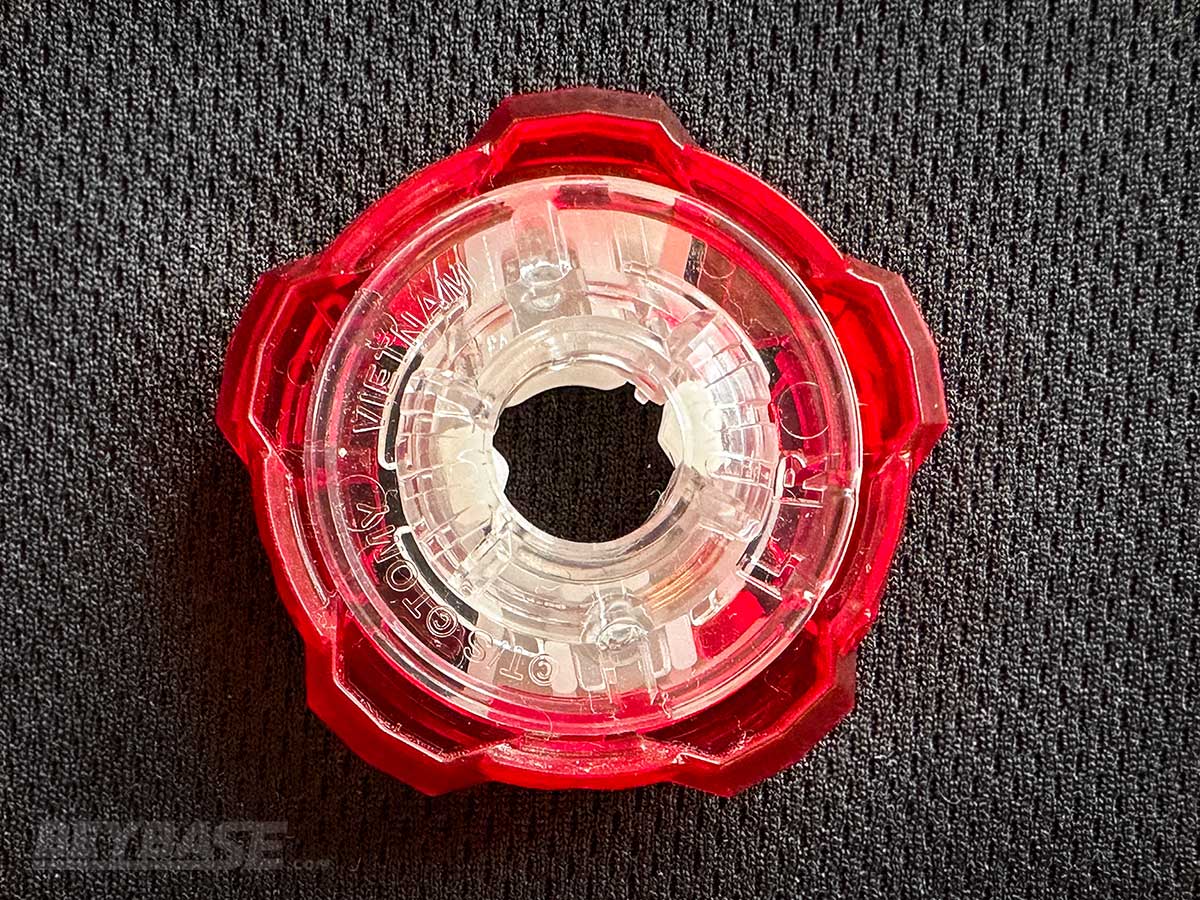
5-60 Ratchet Review
The 5-60 Ratchet is an excellent choice all-around, be it for Attack, Defense, or specific Stamina combos that can see some improvement in ability to scrape the stadium floor smoothly thanks to the 5-60 Ratchet’s design. Given its weight and low height, it is a shoe in for most any competitive Deck.
To read more about the 5-60 Ratchet in detail, take a look at our BX-15 Leon Claw 5-60P Review!
The Verdict
The 5-60 Ratchet is a must-have Ratchet for competitive Bladers. It is an excellent low-height, high-weight Ratchet choice, finding a home in any combo or with any type.

Sponsored: Order the newest Beyblades at malloftoys.com!
Heads up: If you buy something through Mall of Toys, you won’t pay any extra, but I’ll get a small commission. This helps me keep things running. Thanks for your support!
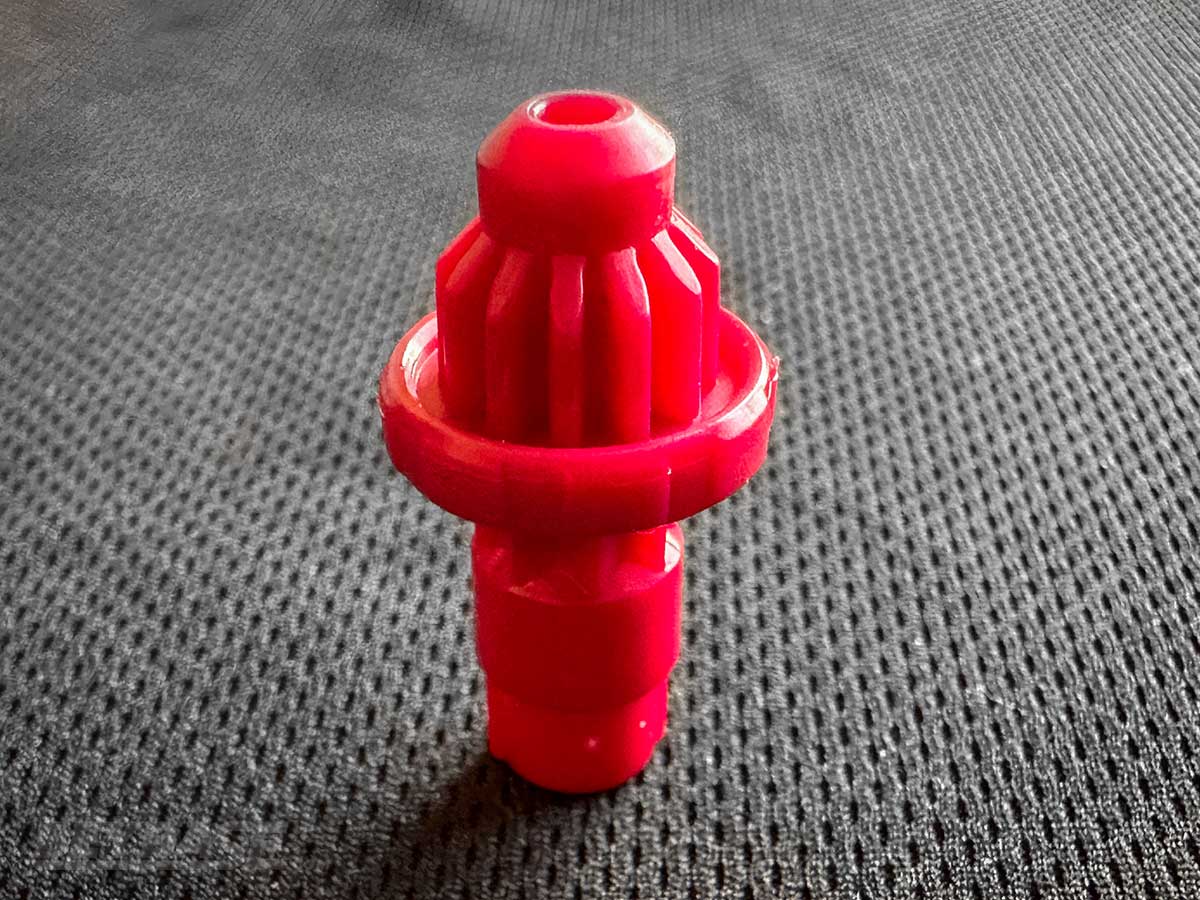
High Taper Bit Review
The High Taper Bit is a “High” variation Bit that takes an original Bit design (in this case Taper Bit) and adds a bit more height to it (1mm). Unlike the previous High Needle Bit and Needle Bit, the High Taper Bit makes no changes to the fundamental design of the Taper Bit.
How burst resistant is the High Taper Bit?
The High Taper Bit, on paper, features the same burst resistance as the original Taper Bit. The single millimeter difference in height may make a difference in its ability to stay together in battle, though, so we will do a comparison anyway.
Knight Shield 5-60T and Knight Shield 5-60HT vs. Dran Sword 3-60F
- KS 5-60T losses by BF: 2 losses (2 BF, 4 KO)
- KS 5-60HT losses by BF: 0 losses (1 XF, 2 KO, 1 OS)
- Taper Burst Finish Loss Percentage: 33%
- High Taper Burst Finish Loss Percentage: 0%
- Worn Dran Sword Blade
It should be noted here that individual parts and players differed, which may be a source of the larger-than-expected disparity between the two Taper style Bits.
Having said that, it is clear at the very least that the High Taper Bit is not negatively impacted by its height enough to result in an observable difference in Burst Resistance relative to the original Taper Bit. In fact, in this matchup the opposite may be true as testing suggests.
Does the High Taper Bit have better Stamina than the original Taper Bit?
This is a question that is reasonably asked, because a taller height means more time spent precessing or wobbling rather than hitting the stadium.
This means, theoretically, we should expect that most High Bits provide some form of Stamina boost, right? We decided to check that out.
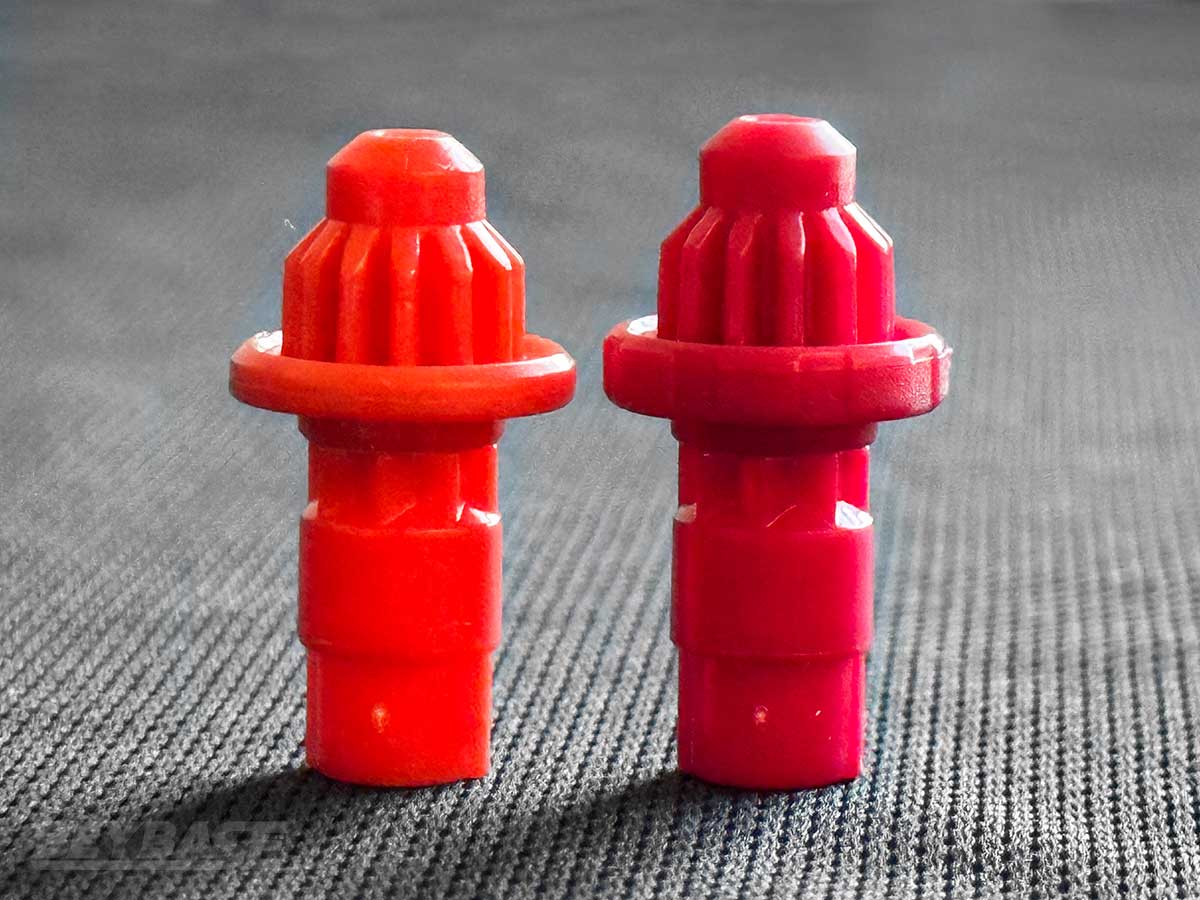
Wizard Arrow 3-80HT vs. Wizard Arrow 3-80T
- WA 3-80HT wins: 6 wins, 7 points (1 KO, 5 OS)
- WA 3-80T wins: 4 wins, 6 points (1 KO, 4 OS)
- High Taper Bit Win Percentage: 60%
- High Taper Bit Point Percentage: 54%
Here we found that the High Taper Bit tended to be able to win out against the original Taper Bit just a little bit more.
In fact, we actually believe this difference is greater than results show because the High Taper Bit was much more prone to losing balance on the 3-80 Ratchet and innately imbalanced Wizard Arrow Blade compared to the Taper Bit.
We bring it up because these are factors that may artificially suppress High Taper Bit’s performance against Taper Bit relative to matchups with optimal setups. It is possible that on a more optimal setup for the High Taper Bit, this stamina difference recorded may be even greater as there are less “wobbly” parts comprising the rest of the combo.
Based on this and later testing we would likely advise against using an 80 Ratchet height with the High Taper Bit.
Is the High Taper Bit good for Balance Combos?
The original Taper Bit did exceptionally well on combos that had a good mixture of aggressive and defensive qualities, usually finding its way onto a Knight Shield Blade combo to thwart attackers.
We wanted to see if this specialty also held true for the new High Taper Bit, while also confirming the above thought about the potential 60 vs. 80 height Ratchet preference for High Taper.
High Taper Bit Balance Testing
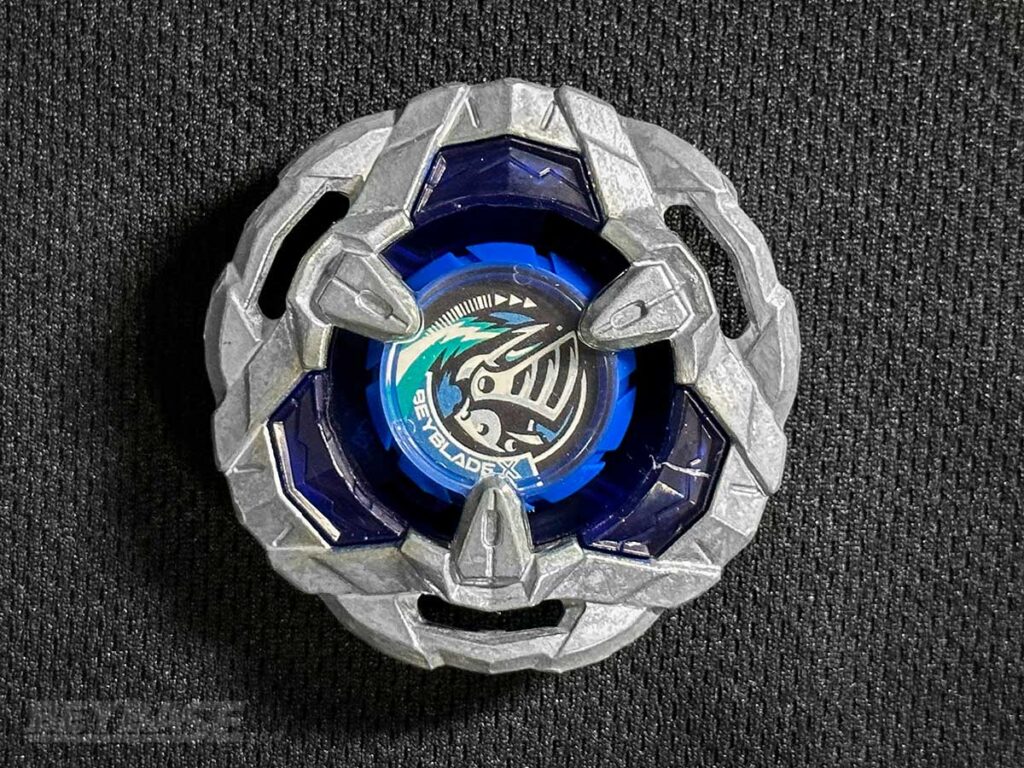
Knight Shield 3-80HT vs. Dran Sword 3-60F
- KS 3-80HT wins: 5 wins, 6 points (1 BF, 4 OS)
- DS 3-60F wins: 3 wins, 4 points (1 BF, 2 OS)
- High Taper Bit Win Percentage: 62.5%
- High Taper Bit Point Percentage: 60%
- 2 Draws
- Worn Dran Sword Blade
Here we found that while Knight Shield did well, there were definitely a few instances where it was getting knocked off balance and stopped spinning prematurely, resulting in more draws and out-spin losses than one would expect.
Benchmark: Knight Shield 5-60T vs. Dran Sword 3-60F
- KS 5-60T wins: 4 wins, 6 points (1 XF, 3 OS)
- DS 3-60F wins: 6 wins, 12 points (2 BF, 4 KO)
- Taper Bit Win Percentage: 40%
- Taper Bit Point Percentage: 33%
- Worn Dran Sword Blade
Knight Shield 5-60HT vs. Dran Sword 3-60F
- KS5-60HT wins: 6 wins, 9 points (1 XF, 1 KO, 4 OS)
- DS3-60F wins: 4 wins, 8 points (1 XF, 2 KO, 1 OS)
- High Taper Bit Win Percentage: 60%
- High Taper Bit Point Percentage: 53%
- Worn Dran Sword Blade
In this set of testing it is clear that outspin losses were less prevalent for the lower High Taper Bit combo compared to the higher High Taper Bit combo earlier. It is also clear that, for one reason or another, this didn’t lead to drastically better performance.
We believe that a mixture of good fortune as well as greater Blade-on-Blade contact led to more knock-outs, less outspins and less Bursts on the Knight Shield Blade. On the 60 Ratchet High Taper Bit may have had more pure stamina than when on the 80 Ratchet, but this did little to change the matchup.
In the end this may be a “pick your poison” situation, risking higher knockout potential for late game safety and higher endurance.
Is the High Taper Bit good for Attack Combos?
Early on in the Beyblade X meta it was clear that the Taper Bit was a safer and similarly aggressive alternative to the Flat Bit, oftentimes finding itself on Dran Sword Blade combos. Naturally, we want to see if there is any meaningful difference between the two “Taper” style Bits now.
High Taper Bit Attack Testing
Benchmark: Dran Sword 3-60T vs. Hells Chain 5-60N
- DS 3-60T wins: 4 wins, 6 points (2 KO, 2 OS)
- HC 5-60N wins: 6 wins, 9 points (3 KO, 3 OS)
- Taper Bit Win Percentage: 40%
- Taper Bit Point Percentage: 40%
- Worn Dran Sword Blade
Here we saw that despite being worn down, the Dran Sword Blade combo was still able to score meaningful knock-outs and even outspins as its higher-stamina Bit allowed it to beat Hells Chain into submission. The Hells Chain Blade once again showed it does an alright job warding off attackers, especially suboptimal variations, but can struggle if they’re on a Bit with more endurance than the typical Flat Bit.
Dran Sword 3-60HT vs. Hells Chain 5-60N
- DS 3-60HT wins: 7 wins, 14 points (2 XF, 1 BF, 2 KO, 2 OS)
- HC 5-60N wins: 3 wins, 4 points (1 BF, 2 OS)
- High Taper Bit Win Percentage: 70%
- High Taper Bit Point Percentage: 78%
- Worn Dran Sword Blade
These results were frankly unusual. While we were expecting to see improved outspin potential, we didn’t consider the fact that in this particular matchup, the single millimeter of difference between Taper and High Taper Bits results in a radically different point of contact on the Hells Chain Blade, positively impacting the Dran Sword Blade’s ability to score knock-outs.
Because we think this is more based on an interaction of Blades rather than purely on the potential superiority of the High Taper Bit, we decided to double check how the same combo fares against a Knight Shield Blade instead:
Dran Sword 3-60HT vs. Knight Shield 5-60N
- DS 3-60HT wins: 4 wins, 6 points (1 XF, 3 OS)
- KS 5-60N wins: 6 wins, 11 points (1 XF, 1 BF, 2 KO, 2 OS)
- High Taper Bit Win Percentage: 40%
- High Taper Bit Point Percentage: 35%
- Worn Dran Sword Blade
With these results we see performance that more closely mirrors the initial testing of Taper Bit against Hells Chain Blade, so we do believe this is the result of a unique Blade interaction and that, in general, you can expect similar results between the two Bits.
There will always be innate differences, and in some instances the 1mm difference will be positive, as shown with our Hells Chain Blade matchup, while in others it may be negative.
Sweating the details to a greater degree is well within your right if you’re an absolute Taper Bit fanatic, but for the vast majority of Bladers you can consider the two Taper Bits equals, with a theoretical skew towards High Taper for endurance at a lower Ratchet height.
The Verdict
The High Taper Bit is for all intents and purposes the same performance-wise as the Taper Bit, but adds a slight nuance to some matchups thanks to its additional 1mm height.
Should you buy the BX-21 Hells Chain Deck Set?
Simply put, only if you’re a die-hard competitive Blader or collector should you feel the need to pick up a BX-21 Hells Chain Deck Set.
The stand out components are the LF Bit (previously a Random Booster exclusive), the 5-60 Ratchet, and the 3-60 Ratchets (not often re-released Ratchets). For some the Hells Chain Blade is also a decidedly important part of the set’s value, though for many competitive uses can be replaced by specialist Blades like Knight Shield or Hells Scythe.
The Wizard Arrow Blade, Knight Lance Blade, 4-80 Ratchet, and Needle Bit are all either not terribly relevant to the Beyblade X meta at the moment or have been re-released often enough that most competitive Bladers own multiple copies already.
For this reason it is unlikely any of these parts, despite their unique colours, are a good reason to pick up a set on their own.
Final Score: 7/10Where to Buy BX-21 Hells Chain Deck Set

Heads up: If you buy something through some of the links on this post, you won’t pay any extra, but I’ll get a small commission. This helps me keep things running. Thanks for your support!
What Do You Think of the BX-21 Hells Chain Deck Set? Comment Below!
If you’re thinking of picking up the BX-21 Hells Chain Deck Set or already have, comment below as we’d love to hear about your thoughts and testing experiences with it!
Or become a BeyBase HQ member to get early article access and behind-the-scenes updates. Thank you!


